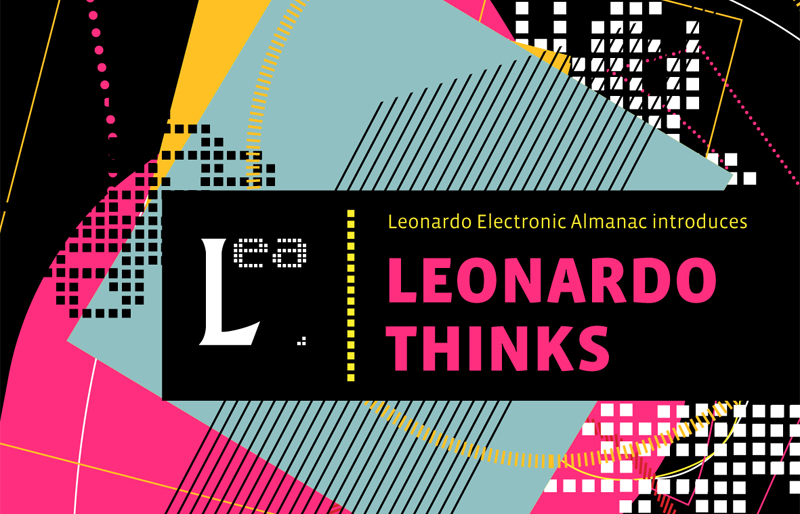
LEONARDO THINKS 1968 – 2011
Historical Opinion by Péter Érdi
Péter Érdi proposes that artistic projects offer insight into how we may reconcile the reductionistic and holistic approaches to biology and dynamic structures.
Biology and Art
The Parts and the Whole
The history of biology could be characterized by two rather complementary approaches. While ‘reductionists’ emphasize the importance of the constituents of the living being, ‘holists’ consider the ‘whole’ as somehow more than the sum of its parts. Regarding ‘modern biology’, the success story of molecular biology offered insight into understanding the structure, function, behaviour, and the onto- and phylogenetic development of biological organisms in terms of ‘micro- scopic’ intra- and intermolecular interactions. Other studies suggest that living systems can be interpreted in terms of ‘macroscopic’ theories of dynamic structures. Artists, however, may have the chance to reconcile the two approaches by trying to see the universe in a drop.
Biological Forms and Patterns
The terms ‘form’, ‘pattern’ and ‘structure’ are among the most popular concepts of modern biology. The biological sciences are interested in many hierarchical levels of organization, from molecules and genes, to organs and individuals, to complex ecosystems. Living systems can be considered dynamic structures main- tained by material, energetic and informational interactions between the system and the environment. One of the main challenges facing contemporary theoretical biology is to understand the basic principles of biological organization. It seems to be the consensus among many scientists that the spatiotemporal reality of biology has to be approached on the basis of both ontogenetic and phylogenetic (evolutionary) time scales. Spatiotemporal pattern formation is the subject of multidisciplinary studies.
Visible and Non-Visible Worlds
Giorgio Careri stressed in a Leonardo Editorial “that both artists and scientists are searching for a world that is removed from immediate vision” [1]. One of the implicit intentions of this Special Issue is to demonstrate both the similarities and the differences between the mental strategies of artistsand those of scientists in dis- covering, on the one hand, the ‘beauty of the details’ behind visible phenomena and, on the other hand, the organizational principle of biological forms and pat- terns constituted by ‘invisible’ entities. While the introduction of new experimental techniques makes it possible to obtain deeper knowledge about specific details of molecular and cellular structures and processes, phenomenological biological theories tryto explain the mechanisms of the ‘emergence of complexity’. Artists may benefit from having a ‘third eye’ by adopting new, visual methodologies. Co- operation and competition seen in molecule or cell populations, in rhythmic and arrhythmic processes, and in biological order formed by randomness may all in- duce artists to express their worldview, be it apocalyptic or harmonic.
Biology and Aesthetics
There are many lines connecting the biological sciences to aesthetic principles. The beauty of plants, animals and humans is connected to ratios (e.g. divine proportion), to symmetryand symmetrybreaking, to colours. Our abilityto perceive psychologically and to accept aesthetically the temporal order of poems and music is based on neurophysiological processes taking place in our brains. Biological systems contain their own descriptions; therefore, they can be considered self-referential systems. While it is rather obvious that, despite the methodological success of the analytic sciences, the marvellous complexity of life cannot be explained completely in terms of physics, it must be admitted that aesthetics, in particular philosophical hermeneutics – emphasizing the necessity of a self-reflexive interpretation – offers a fruitful approach to theoretical biology.
Endnotes
[1] Giorgio Careri, Editorial Leonardo 109, no.4 (1986): 275.
Péter Érdi is currently at Kalamazoo College, Complex Systems Studies, where he is the Henry R. Luce Professor. His web page is http://people.kzoo.edu/~perdi/.
ISSN No: 1071-4391
Author: Péter Érdi, E-mail: perdi@kzoo.edu
Originally published in: Leonardo Vol.22, No.1, (1989), pp.1-2
Print: ISSN 0024-094X, Online : ISSN 1530-9282, DOI: http://www.jstor.org/stable/1575130
Leonardo is a registered trademark of the ISAST.
Files:
